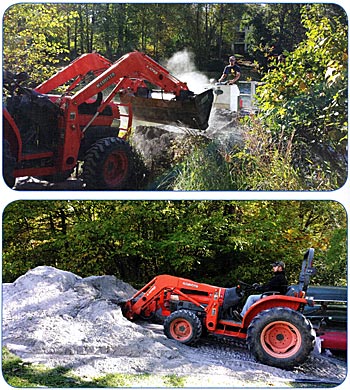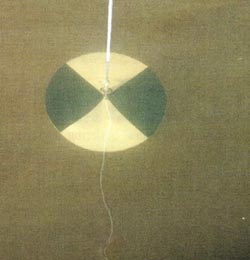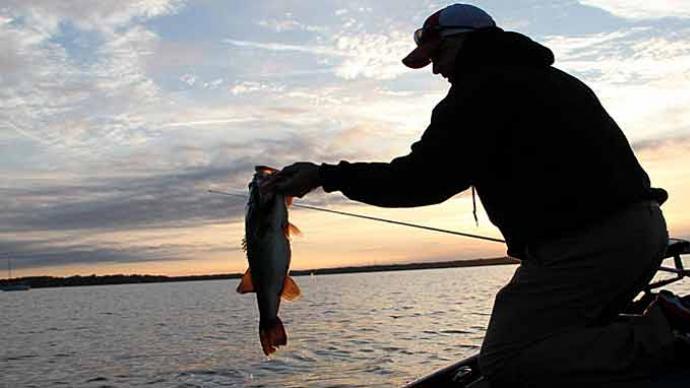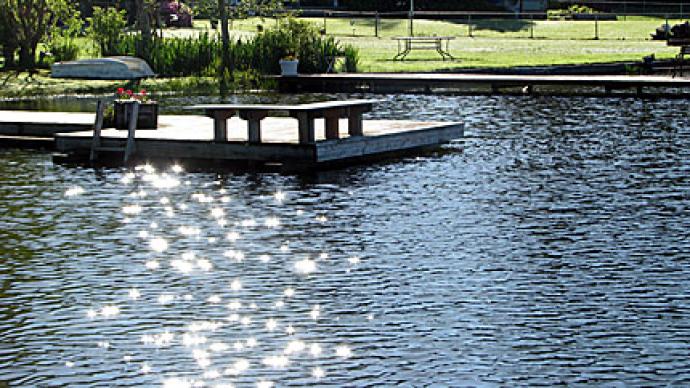
Consider this: your goal is to grow trophy bass in your fishery. You know fertilizing is one of the keys to accomplishing this, but your fisheries manager has informed you that existing water quality problems must first be resolved with lime applications. How does adding lime help achieve your goal? After all, lakes and ponds act as nutrient sinks and excess nutrients lead to unwanted algae blooms, right? Yes, however, fisheries managers are learning more about how to mitigate excess nutrients and to better modify the nutrient composition to accomplish our goals.
Lime is a generic term that can refer to several different compounds. It's important to know the type of lime you are using and the interactions it will have in your water. Quick lime and hydrated lime can be used to rapidly increase pH in your water, though improper applications can lead to fish kills. These types of lime are calcium hydroxide, totally different than what we want to increase alkalinity. Agricultural lime or ag-lime is dolomitic lime, or calcium carbonate, and is used more commonly to stabilize pH and improve alkalinity with more gradual changes. Regardless of formulation, lime is typically provided as a solid that can be graded to specified particle sizes dependent on the purpose and method of application. In recent years, liquid lime formulations have also become more readily available, and are an excellent choice for difficult to access lakes or where regular inputs are needed.
Lime is a calcium-based natural material derived from the earth. Calcium is essential for human bones; it is also necessary for the formation and strength of the skeletal system in fish. Additionally, calcium plays a key role in the development of the exoskeleton of invertebrates and plankton, which serve as the base of the food chain. When we add fertilizer to a lake, our goal is to promote these plankton species.
When is the best time to lime a lake or pond? Most like to do it late winter or early spring. January through March is an excellent time to lime.
Proper pH and alkalinity are also important for nutrient uptake by plankton. If you fertilize a lake with low pH and/or low alkalinity, a bloom will be impossible to achieve due to daily fluctuations in pH and the inability of plankton to utilize nutrients. Proper pH is critical to the health of your fish, but minimizing frequent or rapid changes in pH is even more so. While fish may be able to survive some fairly acidic (pH < 7) or basic (pH > 7) extremes, rapid changes in pH can kill or, at the very least, cause stress to your fish and food chain. pH is measured on a logarithmic scale; therefore, a small change in the pH value is actually a major change to the environment in which your fish live. If this change occurs rapidly due to the difference in transfer water upon stocking or due to diurnal changes allowed by low alkalinity, your fish's health and growth will suffer. Most freshwater fish have an ideal range near neutral. The further from neutral pH gets, the more negative the impact of changing pH will be.
Alkalinity provides buffering against pH change in water. Water with low alkalinity may experience wide pH changes over 24 hours, while water with good alkalinity is resistant to rapid and large diurnal swings in pH. This change is facilitated by the production of acids in your water as the hydrogen ion (H+) binds and is released to other compounds. After all, a simplified definition of pH is a measure of the hydrogen ion concentration of a substance. While alkalinity in the upper teens can be sufficient to stabilize pH enough to establish a plankton bloom, ideally, it should be maintained at 40 mg/L CaC03 or above. Even when lakes are not fertilized, getting pH and alkalinity right will improve productivity by making the pond's existing nutrients more readily available to plankton.

Plankton are subdivided into two categories: Phytoplankton are microscopic plant organisms that produce chlorophyll and photosynthesize. Zooplankton are microscopic animal organisms that are typically brownish in color and feed on phytoplankton. When a pond is fertilized, a bloom will first appear green as it is primarily made up of phytoplankton. Zooplankton begin to flourish due to the abundance of phytoplankton, which in turn transforms a bloom from green to olive-green to olive-brown to brown as zooplankton become more dominant.
The goal of a fertilization program is to feed the bloom the appropriate levels of phosphorus and nitrogen to maintain the bloom. Some biologists choose to fertilize in the spring when water exceeds 65 degrees Fahrenheit and discontinue the addition of fertilizer by mid-summer. This strategy is used to boost productivity during the post-spawn period through the early life stages of your fish's development. Others will continue fertilizing throughout the summer and into early fall to maximize productivity throughout the growing season. In warmer climates, this strategy should be used with caution because oxygen may become limiting in late summer.

A bloom is measured by visibility from the surface. The proper way to measure a bloom utilizes a Secchi disk which is a black and white disc with contrasting colors, which make it easily detectable beneath the water's surface. To use a Secchi disk, simply lower it until it disappears from sight. Raise the disc until it reappears, and then measure the distance from the surface to this fairly distinct distance. This is your Secchi depth. In reality, most any light-colored object lowered beneath the surface can be used for a reasonable measurement. I like to achieve a bloom of 18-inches in the early spring, though a 16-inch bloom doesn't concern me. Stronger blooms of less than 16-inches cause me to lose sleep due to the concern of a fish kill. This concern is because blooms consume oxygen at night and under cloudy skies or due to rapidly changing weather conditions. The result can be a sublethal oxygen supply for your fish. As the temperature warms throughout the growing season, I prefer a bloom of 20 to 24 inches by late summer.
Existing nutrients in the waterbody should be measured, and the potential for excess nutrients in the watershed should be considered before a fertilization program is initiated. For this reason, it is important to work with a reputable fisheries biologist to develop your plan. Though fish kills may occur at any time of the year, most occur in August and September. This period is characterized by a variety of weather conditions that—combined with a bloom—can lead to untimely mixing of your pond or the sudden death or crash of your plankton bloom, resulting in diminished oxygen supply. If a quality fishery is your goal, don't let this risk deter you; a well-managed fertilization program combined with good water quality pays significant dividends for your fishery. And when your fisheries biologist provides this plan, you'll have a better understanding of its merits.
Paul Dorsett is a Fisheries Biologist at SOLitude Lake Management, an environmental firm providing sustainable lake, stormwater pond, wetland and fisheries management services.
Reprinted with permission from Pond Boss Magazine



